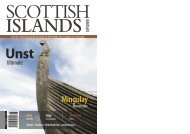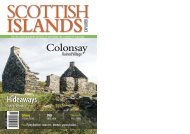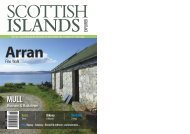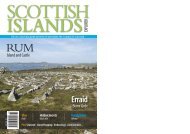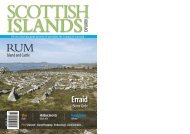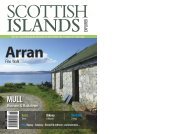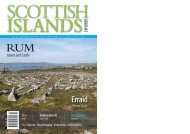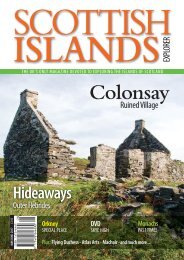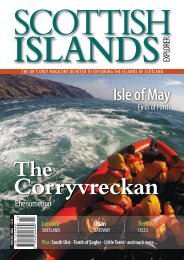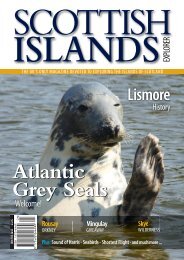You also want an ePaper? Increase the reach of your titles
YUMPU automatically turns print PDFs into web optimized ePapers that Google loves.
The Flying Duchess<br />
The Flying Duchess<br />
The Flying Duchess<br />
David Saunders traces the life of an avian- and aviation-enthusiast<br />
My story starts far from the Scottish islands, when, some 25 years ago I was being<br />
driven at breakneck speed across the massive Castlemartin tank range, south<br />
Pembrokeshire. The driver, the Assistant Range Officer - affectionately named the<br />
‘Monocled Major’ - appreciating my ornithological interest suddenly said, taking his eye<br />
off the track in front, “Do you know Saunders? Do you know! My great aunt once shot a<br />
warbler that had not been seen in Great Britain before!”<br />
I was disappointed that he could not tell me more, other than to say his great aunt was<br />
the Duchess of Bedford, and the event took place on Fair Isle. The warbler, so I subsequently<br />
discovered, was first observed skulking among turnips on 29 September 1910 and the<br />
following day collected, following ‘a great hunt.’ Even then its identity remained a mystery<br />
and so the skin was sent to the eminent ornithologist, William Eagle Clarke, at the Royal<br />
Scottish Museum.<br />
Suspecting it to be a Blyth’s Warbler he passed the specimen on to Ernst Hartert, Director<br />
of the museum at Tring, Hertfordshire who confirmed identification. Named after Edward<br />
Blyth, the breeding bird is to be found from southern Sweden and eastern Poland to<br />
Afghanistan and the Pamirs. Its winter months are spent from the foothills of the Himalayas<br />
to Sri Lanka.<br />
‘Among the most enigmatic of birds on the British list’ the next Blyth’s warbler was not<br />
reported until 1928, also from Fair Isle, then a gap of 51 years until one was caught and<br />
ringed on Holm, Orkney in October 1979. Since then there have been recordings in most<br />
years, the majority from Scottish islands.<br />
Brought up by an Aunt<br />
Born in 1865, the great aunt in question was the second daughter of the Reverend Walter<br />
Tribe, vicar of Stockbridge, Hampshire and christened Mary du Caurroy. She was just two<br />
years old when her father was appointed to a position in India. Mary and her older sister<br />
would not accompany them, instead were brought up by an aunt in England.<br />
Her education included Cheltenham Ladies College and a year in Switzerland before,<br />
aged 16, she sailed to join her parents. Shortly after arriving in Lahore she caught typhoid<br />
and although making a full recovery, attributed the illness to the deafness which in later<br />
years increasingly troubled her.<br />
In 1885, at the Rawalpindi Durbar, Mary met Lord Herbrand Russell, second son of the<br />
Duke of Bedford. Their engagement was announced two years later at a Viceregal Ball in<br />
Simla. They were married in January 1888 and their only child, a son, was born the<br />
following December.<br />
36 SCOTTISH ISLANDS EXPLORER MAY / JUNE <strong>2017</strong><br />
MAY / JUNE <strong>2017</strong> SCOTTISH ISLANDS EXPLORER 37



